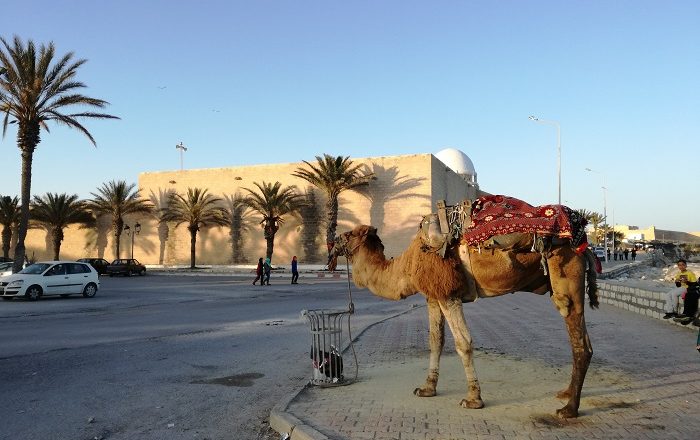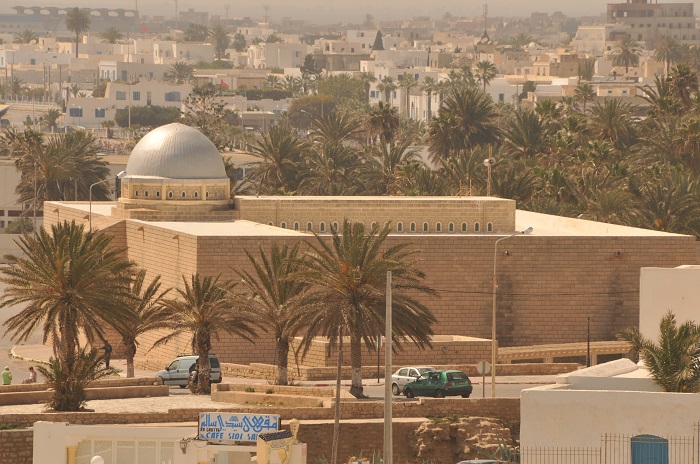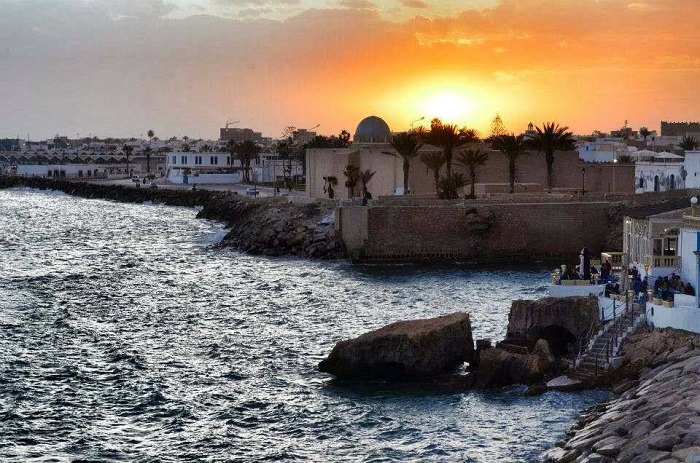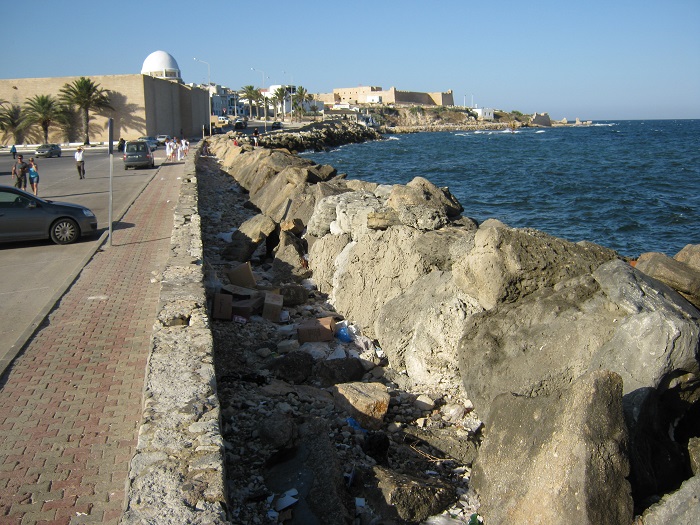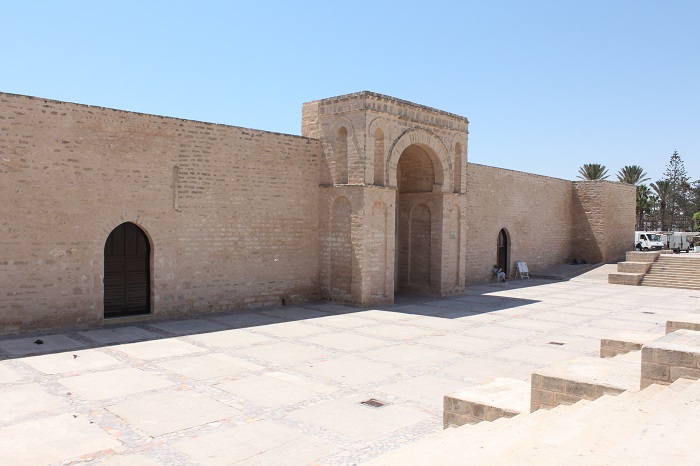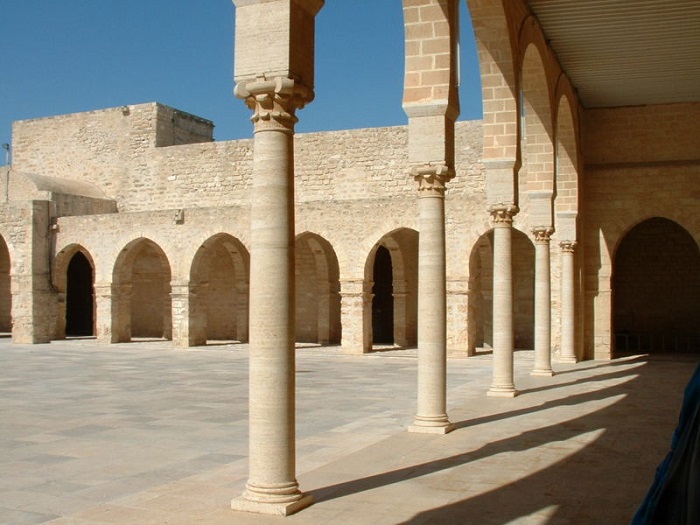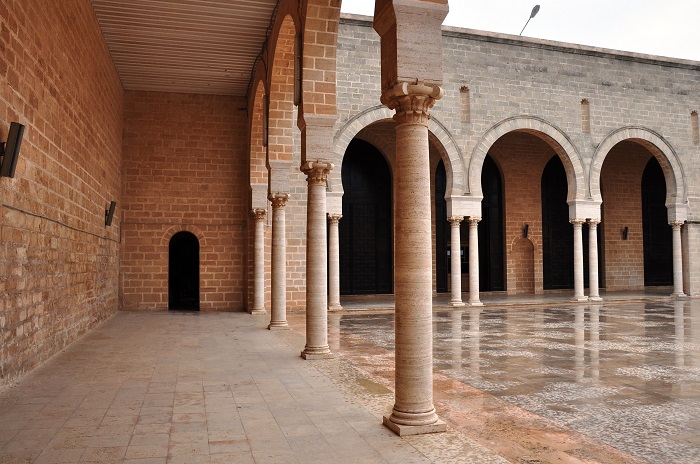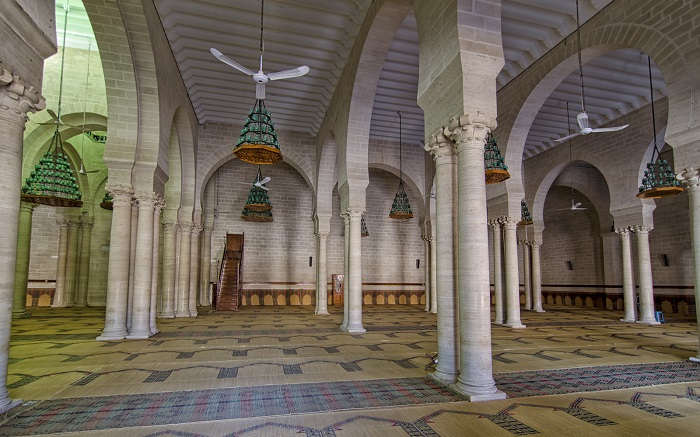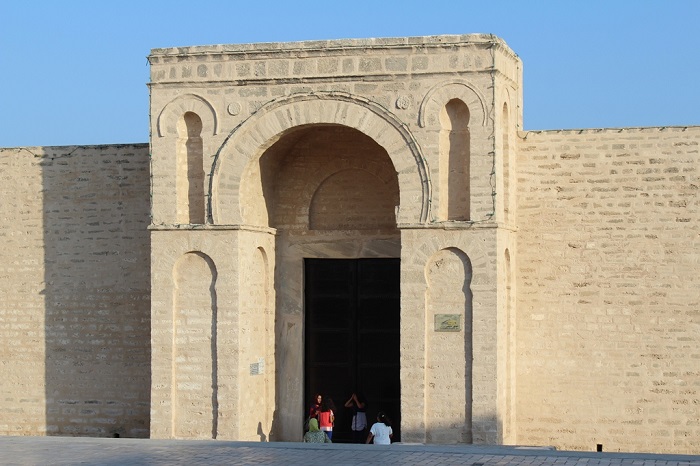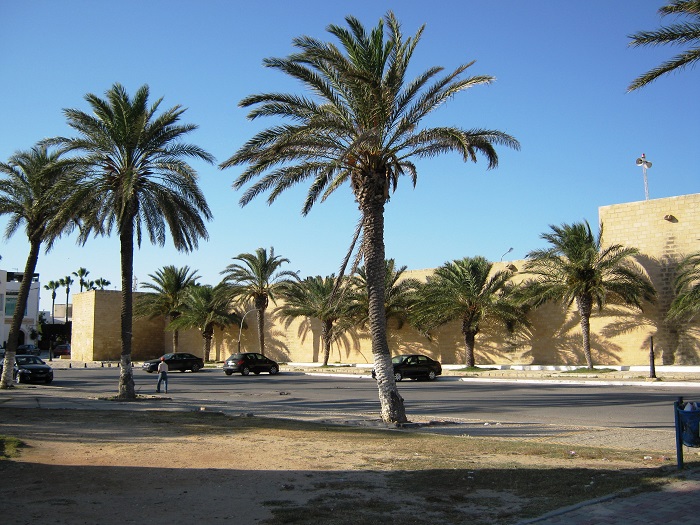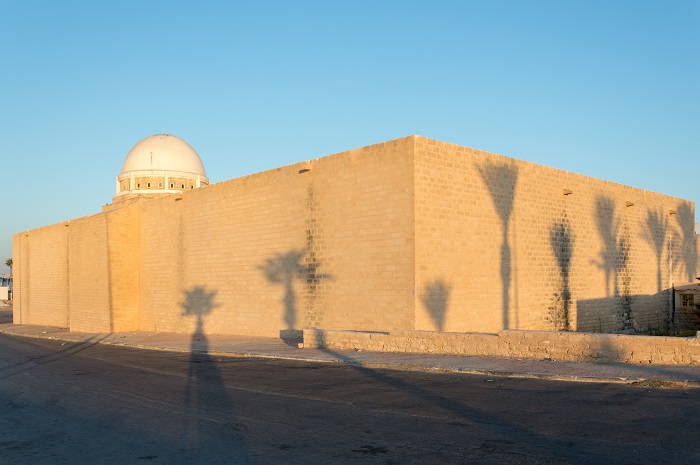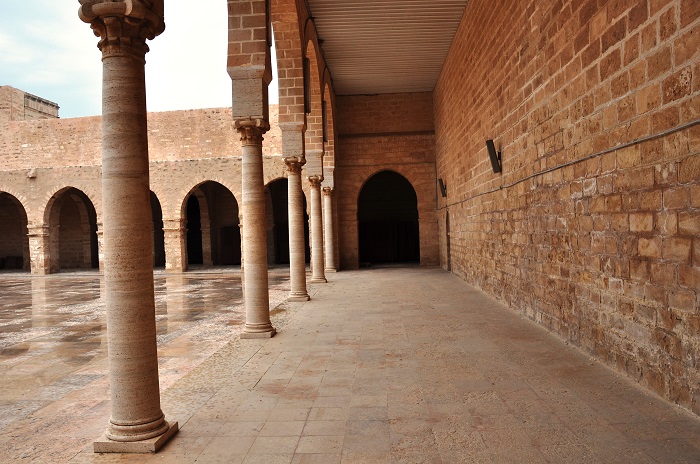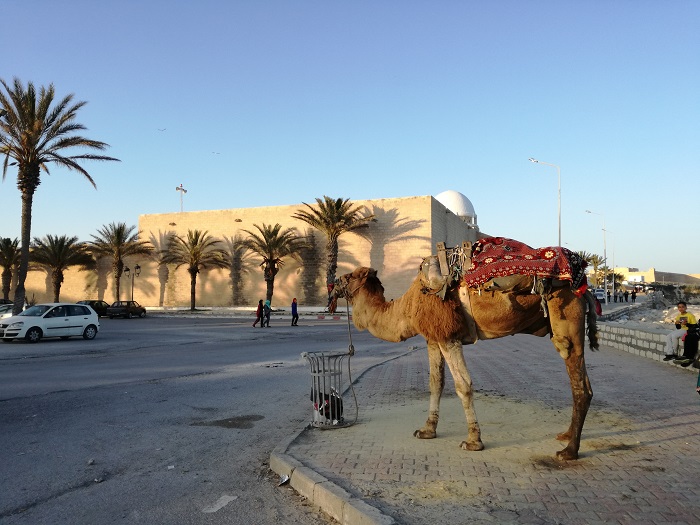The Great Mosque of Mahdiya is one of the most significant Islamic monuments that is situated in the coastal city of Mahdia, which serves as the capital city of the Mahdia Governorate, within the eastern part of the Republic of Tunisia. Due to the significant importance this structure has, from a historical perspective, it attests to the rich history of the Fatimid dynasty, and it has strong links to the country’s early Islamic period and the founding of the Fatimid Caliphate. In spite of restoration over the centuries, the mosque has kept its distinctive architectural style that makes it stand out from other mosques in the region. Its dominating location overlooking the Mediterranean Sea, along with its religious and historical significance, makes it an obligatory site for all those who study the early Islamic presence in North Africa.
The Great Mosque of Mahdiya is located in the middle of Mahdia, some 200 km (124 mi) south of the country’s capital, Tunis. On a small peninsula named Cape Africa, the mosque fronts the Mediterranean, an indication of its defensive importance when it was first constructed, and as Mahdia itself served as the Fatimid Caliphate’s capital before the dynasty relocated east to Egypt, the mosque is among the most apparent remnants of this chapter. The city is a less frenetic stop nowadays compared to certain other Tunisian tourist spots, yet its archaeological and architectural wealth, including the Great Mosque, continues to attract visitors.
The mosque was originally built in 916 AD by Caliph Abdallah al-Mahdi Billah, the founder of the Fatimid Caliphate. As mentioned above, Mahdia was the new capital of the Fatimid dynasty at the time, and the mosque was planned as a central mosque for the rulers. The siting of Mahdia as a capital was strategic, with superb natural defenses since it is a peninsula, and rendering it an easily defended base for the Fatimid expansion into the remainder of North Africa and beyond. The mosque was an essential part of this city, not only as a point of prayer but also as a symbol of Fatimid power and religious legitimacy, and another reason for its construction was to exhibit the strength of the Fatimid rulers through its distinctive architectural style, which set it apart from other mosques in the region.
Unlike the more common hypostyle mosques of North Africa, the mosque features an unusual rectangular plan and fortress-like appearance. Its tall stone walls and lack of a minaret give it a unique and austere appearance, more resembling an early Islamic fortification than a mosque. This was likely due to Mahdia’s function as a military fortress and its exposure to attack by sea. The mosque also had a monumental entrance that further emphasized its fortress-like appearance. The entrance, a huge arched gateway, was defended by thick stone walls, contributing to the sense of power and solidity.
The prayer hall, a large open space supported by arcades, was designed to accommodate a vast congregation. The qibla wall, oriented towards Mecca, was embellished with a mihrab, a semicircular niche indicating the direction of prayer. Although the mosque has gone through several cycles of destruction and reconstruction, efforts have been made to revive its original Fatimid architectural features as faithfully as possible.
During its early years, the Great Mosque was among the most important religious and political establishments of the Caliphate, and it was the location where momentous sermons were delivered, reiterating the legitimacy of the ruling house. In addition, it played a crucial role in spreading Fatimid dominance across North Africa, especially when the dynasty wished to extend its influence toward Egypt, but as the Fatimids shifted their capital to Cairo in the 10th century, Mahdia gradually became politically insignificant, and the mosque came to play a less significant role in the Islamic world. Still, despite the decline, the mosque remained an integral part of Mahdia’s religious and cultural life.
Over the centuries, the structure was destroyed in attacks, notably by European armies, including the Norman occupation of Mahdia in the 12th century and Spanish raids during later times. The mosque was sometimes partially destroyed but always restored, which proves to be a testament to its continued importance to the people who appreciated this sacred building.
In the 20th century, restoration efforts were made to preserve its original shape, so that it could be appreciated by today’s visitors in its entire architectural and historical splendor. The Great Mosque of Mahdiya is no longer just a mosque but an important historical monument today, and although it is no longer politically significant in the manner that it was under the Fatimid Empire, it is nevertheless a considerable place to study Tunisia’s early development under Islam.
As the mosque attracts visitors interested in Fatimid architecture, Islamic history, and the history of Mahdia as a capital, its unique architecture sets it apart from other Tunisian mosques, and it is an excellent representation of early Fatimid architecture.
A trip to the Great Mosque of Mahdiya is a fulfilling experience for architecture and history lovers. The mosque is located in the ancient city of Mahdia, close to other sites such as the Skifa el Kahla, an ancient city gate, and the Mahdia Museum, which offers additional information about the region’s history. The city itself is easily reachable by road from other large Tunisian cities like Tunis, Sousse, and Monastir, and a bus or train can be taken from these cities, or a car can be hired for more convenience. The best time to travel to Mahdia and the Great Mosque is between October and April, when the weather is cooler and better suited for sightseeing.
Since Tunisian summers are extremely warm and outside activities may not be so comfortable, please ensure the visiting hours for the mosque, as well, because it remains an operational house of prayer and will close for tourists to observe prayers. Respectful attire in modest style is recommended for sightseeing to respect the religious place.
In conclusion, the Great Mosque of Mahdiya is a powerful reminder of Tunisia’s early Islamic history and the legacy of the Fatimid Caliphate, and its distinctive architectural features, historical significance, and strategic location make it one of the most fascinating mosques in North Africa. Even though Mahdia is no longer a political capital, the mosque is still narrating its history and attracting visitors interested in studying the rich culture of the region. A tour to this fascinating location offers not just an insight into medieval Tunisia but also the opportunity to admire the architectural achievements of the Fatimid period.

